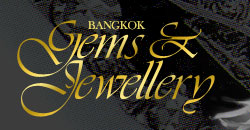
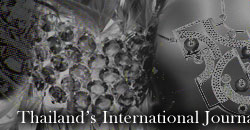
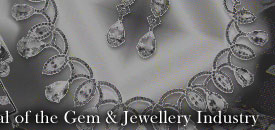
 |
 |
 |
| |
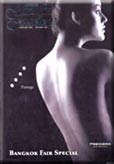 |
Old
issues |
Vol.
18 No. 7 -- February 2005 |
|
 |
||||
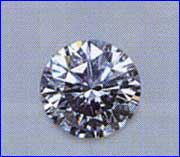 |
The
relationship between a round brilliant cut diamond's proportions and
its appearance has been the subject of debate in the .ndustry for quite
a while. Now the jemological Institute of America (GIA) puts all speculation
to rest by publishing the findings of GIA Research on what makes the
perfect round brilliant. The Institute's 15 fear research project has
examined he intricate and complex relationships among the various actors
that lead to a diamond's face-up appearance and identified he aspects
that are essential to good cut quality.
The
findings were published n the Fall 2004 Issue of Gems & Gemology,
the Institute's award vinning publication. "A Foundation or Grading
the Overall Cut Quality of Round Brilliant Cut Diamonds" by T.M.
Moses et al., ties the various lements of GIA's study together ) outline
the scientific basis for a diamond cut grading system. |
|||||||||
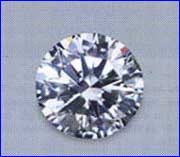 |
||||||||||
These diamonds are, in generel, viewed positively
by experienced members of the diamond trade, due to the overall balance
of their patterns. Photos by AI Gilbertson and Barak
Green. Courtesy of Gems & Gemology, @ 2004 GIA. |
||||||||||
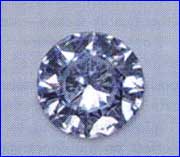 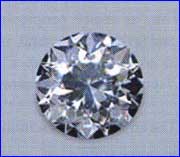 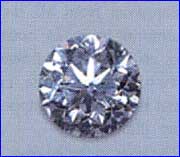 |
||||||||||
These diamonds are viewed negatively by experienced members of the diamond trade, due to a variety of unattractive pattern-related traits such afisheye (left), dark upper-girdle facets (centre), and a busy, interrupted overall pattern (right). Photos by Al Gilbertson and Barak sen. Courtesy of Gems & Gemology, © 2004 GIA. |
||||||||||
• The quantity and quality of brightness
(as brilliance is now called) and fire are only part of the overall
diamond appearance. The pattern of bright and dark areas within a
diamond (the basis of scintillation) must be considered as well. • Viewing environment plays an important
role in diamond appearance: to be attractive, a diamond should look
good in realistic environments. |
||||||||||
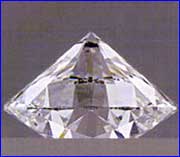 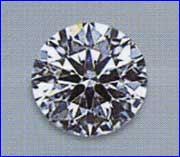 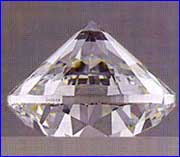  |
||||||||||
These two diamonds are fairly similar in diameter and face-up
appearance. However, the diamond on the right contains extra, or "hidden,"
weight located in the thickness of the girdle; therefore, the diamond
on the right would receive a lower grade in GIA's diamond cut grading
system. The diamond on the left weighs 0.61 ct, while the diamond on
the right weighs 0.71 ct. Photos by Al Gilbertson, Barak Green and Maha
Tannous. Courtesy of Gems & Gemology, © 2004 GIA. |
||||||||||
| Result from Computer Modelling and Observation Tests. The GIA researchers based their findings on the results of two main parts of the research project: computer modelling to predict which seis of proportions would yield the best results under specific lighting conditions; and extensive visual preference tests conducted with a wide variety of trade and non trade observers to determine the ability to consistently discern face up appearance aspects (such as durability and finish). Comparison of those results to observations of actual diamonds in similar conditions allowed the researchers to refine these metrics.Further tests evaluating overall appearance, made by representatives from all levels of the diamond trade in controlled viewing environments showed that these two aspects alone are not sufficient to predict the appearance of many diamonds. |
||||||||||
|
||||||||||
GIA
is developing reference system software that will soon be able to provide
predicted' overall cut grades based on proportion information (such
as crown angle or table size) and other quality factors (such as finish)
input by the user. The Institute will offer simplified versions of this
software on its website free to members of the trade and consumers.
More detailed versions will be available for manufacturers and there
are plans to offer the software as an embedded function in optical measuring
devices such as those on offer by Sarin and OGI. Versions of the software
will also provide the ability to compare the results from two different
proposed diamonds, view "wire frame" diamond profiles for
proposed diamonds, and print the calculated results. In the near future, GIA will incorporate the findings from its research into its education courses, various presentations, and informational brochures for the consumer and trade. The institute also plans to incorporate the results of their diamond cut research into the GIA Diamond Grading Report and GIA Diamond Dossier® for all standard round brilliant diamonds in the D-Z colour range for Flawless to 13 clarities. Each new GIA Report and Dossier® will include an overall cut grade, expanded proportion information in the form of a new diamond profile graphic, and a brief explanation of the Four Cs. GIA plans to announce their new repons in mid 2005. |
||||||||||
|
C
o p y r i g h t © 2 0 0 0 - 2 0 1 6 D4U
WEB TM A l l R
i g h t s R e s e r v e d |